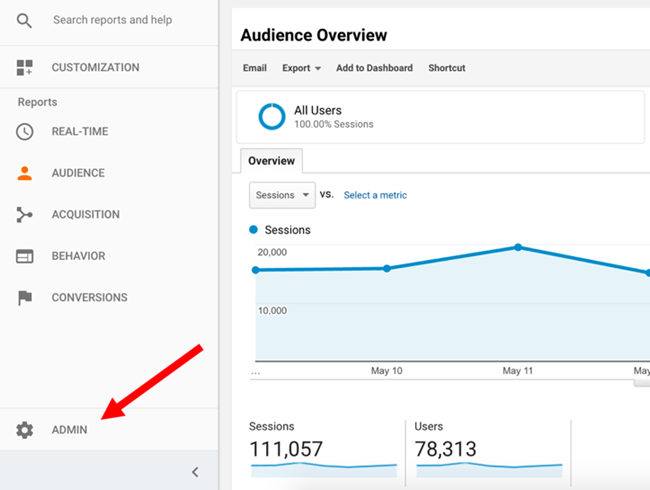Maximizing Your ROI with Remarketing In Google Analytics
Maximizing Your ROI with Remarketing In Google Analytics
Blog Article
Harnessing Remarketing in Google Analytics: A Comprehensive Overview
Using remarketing in Google Analytics supplies companies a calculated side in reaching out to possible consumers. The capability to target individuals who have actually already connected with your internet site offers a distinct possibility for tailored advertising and marketing efforts. By comprehending exactly how to craft audience lists and release them properly, businesses can considerably boost their conversion rates. The details of setting up and optimizing remarketing projects need a thorough understanding of audience segmentation and efficiency analysis. This overview will certainly clarify the crucial actions entailed in harnessing the full capacity of remarketing in Google Analytics, resulting in improved advertising outcomes.
Recognizing Remarketing in Google Analytics
Remarketing in Google Analytics enables companies to tactically target customers that have actually previously engaged with their website or mobile app. By leveraging data from Google Analytics, services can produce customized remarketing checklists based on user actions, such as web pages visited, actions taken, or certain objectives achieved. This effective device allows organizations to re-engage with customers that have actually revealed interest in their service or products, ultimately enhancing the chance of conversion.
Recognizing the different kinds of remarketing strategies is vital for a successful project - What Is “Remarketing” In Google Analytics?. Google Analytics supplies various options, including common remarketing, dynamic remarketing, and remarketing lists for search advertisements (RLSA) Each type offers an unique function and can be tailored to fulfill particular advertising and marketing purposes
Additionally, assessing the performance of remarketing projects is vital for enhancing outcomes. Google Analytics supplies valuable understandings right into the performance of various remarketing strategies, permitting services to make data-driven choices and refine their targeting method. By continually changing and keeping track of remarketing efforts based on analytics data, organizations can optimize ROI and drive success in their advertising initiatives.
Setting Up Remarketing Projects

After establishing target market lists, the following step is to connect Google Analytics with Google Advertisements. By connecting these 2 platforms, organizations can flawlessly transfer audience listings from Google Analytics to Google Ads for remarketing objectives. This integration permits more specific targeting and better campaign performance.
Once the accounts are connected, businesses can produce remarketing campaigns in Google Ads utilizing the audience lists formerly specified in Google Analytics. These projects can be personalized with certain advertisement creatives, messaging, and bidding process techniques to properly re-engage with previous visitors and drive conversions. By following these actions, organizations can take advantage of the power of remarketing to improve their marketing efforts and enhance ROI.
Using Target Market Segmentation Methods

Predefined sections in Google Analytics enable you to rapidly evaluate typical audience classifications click resources like brand-new users, returning customers, or customers that finished a certain goal on your website. Personalized segments, on the other hand, allow you to create unique sectors based on details requirements that are necessary to your service objectives. Dynamic remarketing lists instantly adjust based on user behavior, showing individualized ads to individuals that have actually communicated with your website in specific means.
Analyzing Remarketing Efficiency Metrics
Upon evaluating the efficiency of remarketing projects in Google Analytics, the evaluation of key efficiency metrics offers important understandings into audience engagement and conversion prices. By diving right into metrics such as click-through prices (CTR), conversion rates, cost per purchase (CPA), and return on ad invest (ROAS), marketing professionals can gauge the success of their remarketing efforts. Examining these metrics allows marketers to enhance projects, fine-tune target market targeting, and designate budget plans effectively to boost total remarketing performance.
Optimizing Remarketing Methods
When refining remarketing approaches in Google Analytics, concentrating on target market division is critical for accomplishing project success. By dividing your audience into certain segments based upon their habits, demographics, or interests, you can customize your advertisements better per team. This targeted method increases the likelihood of engaging individuals who have actually already revealed passion in your services or products, leading to higher conversion prices.
Another crucial facet of optimizing remarketing techniques is constantly testing and refining your projects (What Is “Remarketing” In Google Analytics?). A/B screening different ad creatives, messaging, or deals can aid you identify what resonates finest with your audience and drives one of the most conversions. By examining the efficiency of these tests in Google Analytics, you can make data-driven choices to enhance your remarketing initiatives additionally
Additionally, leveraging vibrant remarketing can significantly enhance your campaign results. This function permits you to show individualized ads to customers based on their past communications with your site, showcasing services or products they have actually formerly checked out. By providing tailored web content to customers based on their interests and actions, dynamic remarketing can aid enhance interaction and drive conversions.
Verdict
In final thought, harnessing remarketing see here in Google Analytics is a tactical approach to target users who have actually formerly involved with a web site. By creating tailored target market checklists and using audience division approaches, businesses can optimize remarketing projects for enhanced conversion rates. Evaluating performance metrics and continually optimizing strategies are important for taking full advantage of the performance of remarketing initiatives.
Google Analytics supplies different alternatives, including basic remarketing, vibrant remarketing, and remarketing checklists for search advertisements (RLSA)After setting up target market listings, the next action is to connect Google Analytics with Google Ads. By connecting these two platforms, services can flawlessly move target market checklists from Google Analytics to Google Advertisements for remarketing functions.As soon as the accounts are linked, businesses can produce remarketing projects in Google Advertisements utilizing the target market provides previously defined in Google Analytics.When refining remarketing techniques in Google Analytics, focusing on target market division is extremely important for achieving project success.
Report this page